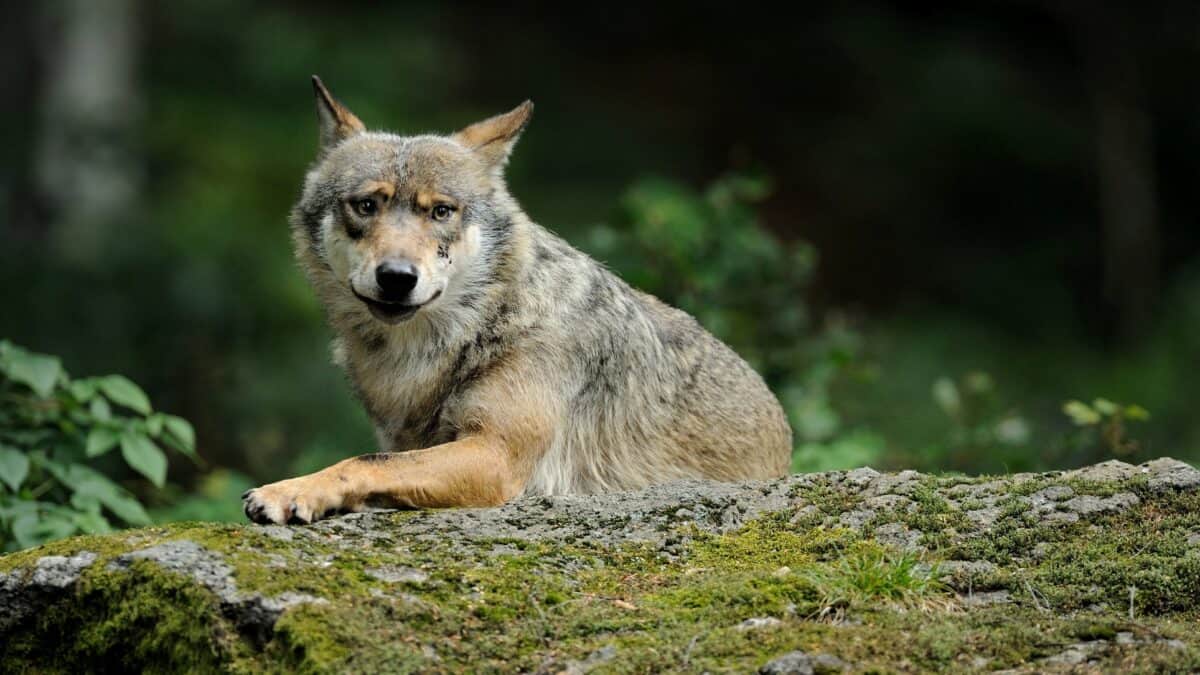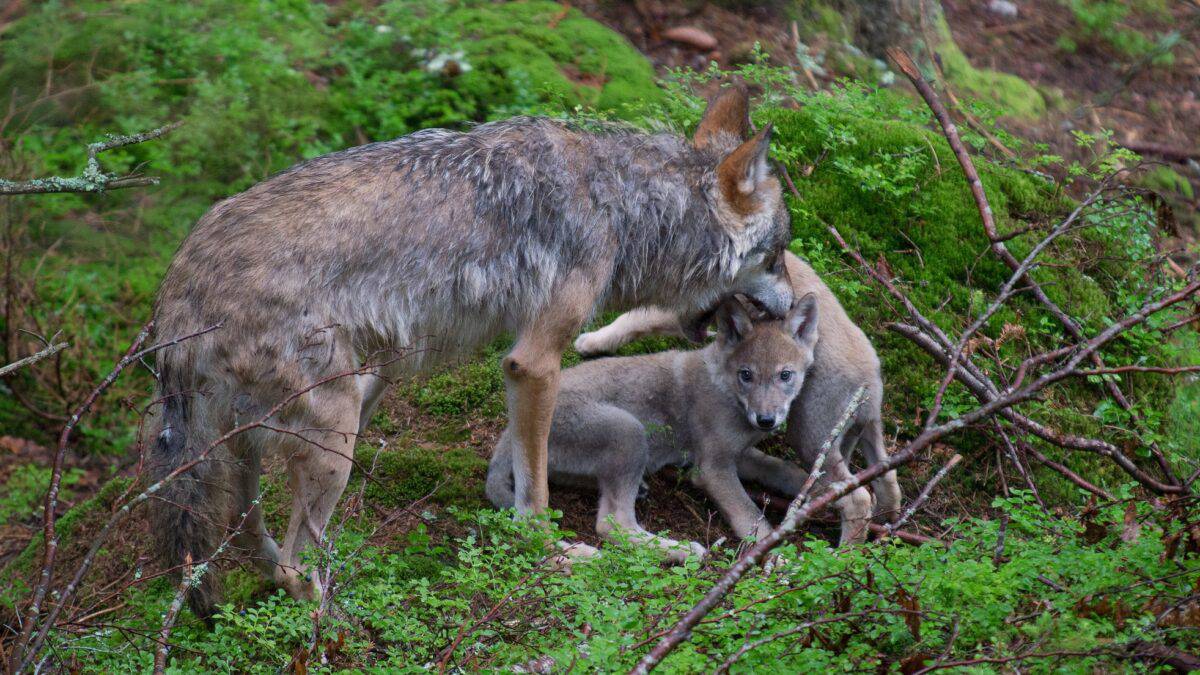Deep in the wilderness of America’s national parks, one particular landscape stands out as a haven for one of nature’s most misunderstood predators. While wolves once roamed freely across North America, their populations dwindled dramatically through the 20th century due to hunting and habitat loss. Today, after decades of conservation efforts, these magnificent creatures are making a comeback in several protected areas. But which U.S. national park boasts the highest concentration of wild wolves? The answer is Yellowstone National Park, where the successful reintroduction of gray wolves has become one of the most celebrated wildlife conservation stories in American history.
The Historic Range of Gray Wolves in North America

Gray wolves (Canis lupus) once dominated the North American landscape, with a range extending from the Arctic tundra to central Mexico. These apex predators played a crucial role in maintaining ecosystem balance across diverse habitats. Before European colonization, scientists estimate that 250,000-500,000 wolves roamed the continent. Their adaptability allowed them to thrive in forests, prairies, mountains, and tundra ecosystems. By the mid-20th century, however, systematic extermination campaigns had eliminated wolves from nearly all of the contiguous United States, with only small populations remaining in northern Minnesota and Michigan’s Isle Royale.
The Yellowstone Wolf Reintroduction Program

Yellowstone National Park made history in 1995 when it began one of the most ambitious wildlife restoration projects ever undertaken. After wolves had been absent from the park for nearly 70 years, the U.S. Fish and Wildlife Service, working with Canadian authorities, captured 14 wolves from Alberta, Canada. These wolves were transported to Yellowstone and released in the park’s northern range. In 1996, an additional 17 wolves from British Columbia were introduced. This carefully planned reintroduction aimed to restore ecological balance to an ecosystem that had changed dramatically in the wolves’ absence. The program faced significant opposition from ranchers concerned about livestock predation, but conservationists prevailed, arguing that the ecosystem needed its keystone predator to function properly.
Current Wolf Population in Yellowstone

Today, Yellowstone National Park hosts the most robust and visible wolf population in the contiguous United States. From the original 31 reintroduced wolves, the population grew steadily to peak at around 174 wolves in 2003. Natural fluctuations have occurred since then, with recent counts indicating approximately 90-100 wolves living within park boundaries, divided among 8-10 packs. This represents the highest density of wolves in any national park in the lower 48 states. While this might seem small compared to historical numbers, it represents a stable population within the park’s ecosystem. The wolves have established territories throughout the park, with the greatest concentration in the northern range and Lamar Valley, often called “America’s Serengeti” for its wildlife viewing opportunities.
The Ecological Impact of Wolves in Yellowstone

The return of wolves to Yellowstone has triggered what ecologists call a “trophic cascade”—a series of ecological changes rippling through the food web. With wolves back on the landscape, elk behavior changed dramatically; they began avoiding certain areas and moving more frequently, reducing overgrazing on willow and aspen trees along riverbanks. This allowed these tree species to recover, which in turn stabilized riverbanks and created habitat for beavers, songbirds, and other species. The wolves also reduced coyote populations, benefiting small mammals and their predators like foxes and raptors. Bears have benefited from scavenging wolf kills. This remarkable transformation demonstrates how a single predator species can reshape an entire ecosystem, increasing biodiversity and ecological resilience.
Wolf Packs and Social Structure in Yellowstone

Yellowstone’s wolves live in highly organized social groups called packs, typically consisting of 5-12 individuals. Each pack is led by an alpha pair—the breeding male and female—with the rest being their offspring, siblings, or occasionally unrelated wolves. Pack territories in Yellowstone range from approximately 50 to 300 square miles, with boundaries that are actively defended against neighboring packs. The famous Druid Peak pack, which once numbered 37 wolves—the largest documented pack in the park—captivated visitors and researchers alike with their complex social interactions. Wolf researchers have documented fascinating social behaviors including elaborate greeting ceremonies, coordinated hunting strategies, and communal pup-rearing. This complex social structure allows wolves to hunt prey much larger than themselves and survive in Yellowstone’s challenging environment.
Yellowstone’s Wolf Watching Opportunities

Yellowstone National Park offers the best wolf watching opportunities in the United States, drawing wildlife enthusiasts from around the world. The Lamar Valley, located in the northeastern section of the park, is often called “the American Serengeti” due to its expansive views and abundant wildlife, including wolves. Early morning and evening hours provide the best viewing times, as wolves are most active during dawn and dusk. Experienced visitors bring spotting scopes and binoculars, as wolves typically remain at a distance from roads. The park’s Wolf Project staff occasionally set up spotting scopes at pullouts in Lamar Valley, sharing their expertise with visitors. Winter provides exceptional wolf viewing opportunities, as the animals are more visible against the snow and tend to follow elk herds to lower elevations.
Research and Monitoring Efforts in Yellowstone

Yellowstone’s wolves are among the most studied wild wolf populations in the world. The Yellowstone Wolf Project, established in 1995, has continuously monitored the population, creating an unprecedented long-term database on wolf ecology and behavior. Researchers collar selected wolves with GPS devices to track movements, hunting behavior, and territory use. Each year, biologists conduct aerial surveys to count wolves and document pack structures. This intensive monitoring has yielded valuable insights into wolf predation patterns, territorial behavior, disease dynamics, and genetic diversity. The research extends beyond wolves to examine their effects on the entire ecosystem, from plants to other animal species, making Yellowstone a living laboratory for understanding predator-prey relationships and trophic cascades.
Wolf Management Challenges in and Around Yellowstone

Managing Yellowstone’s wolf population involves balancing ecological benefits with human concerns. Inside the park, wolves receive complete protection, but once they cross park boundaries, they may face legal hunting in surrounding states. This has created controversy when wolves known and studied within the park are legally killed outside its boundaries. Park biologists work with state wildlife agencies, tribal governments, and conservation organizations to develop management strategies that sustain wolf populations while addressing concerns about livestock depredation and impacts on game animals. The U.S. Fish and Wildlife Service has repeatedly changed the protected status of wolves in the region as legal challenges and policy shifts have occurred. This complex management landscape requires ongoing negotiation among stakeholders with different values and interests regarding wolves.
Competition with Other Predators in Yellowstone

Yellowstone’s ecosystem features a full complement of large predators, creating a dynamic landscape of competition and coexistence. Wolves regularly interact with grizzly bears, black bears, cougars, and coyotes. Grizzlies often appropriate wolf kills, using their size advantage to displace wolf packs from their prey. Wolves, in turn, have significantly reduced coyote populations in the park, with estimates suggesting a 50% decline in coyotes following wolf reintroduction. Cougars and wolves generally avoid direct confrontation by utilizing different hunting strategies and habitat preferences. This complex predator guild creates a more resilient ecosystem with multiple checks and balances. Researchers continue to study how these predators partition resources and affect each other’s behavior, providing insights into predator ecology that were impossible before wolves returned to complete Yellowstone’s predator community.
Wolf Reintroduction Beyond Yellowstone

While Yellowstone hosts the most famous wolf population, other reintroduction efforts have occurred across the United States. Simultaneous with Yellowstone’s program, wolves were also reintroduced to central Idaho, where they’ve thrived in the wilderness areas. Mexican gray wolves, a distinct subspecies, were reintroduced to Arizona and New Mexico beginning in 1998, though this population has struggled more than the northern Rockies wolves. Colorado voters recently approved a wolf reintroduction program scheduled to begin by 2023. Natural dispersal has allowed wolves to establish packs in Washington, Oregon, and California. Despite these successes, no other location offers the combination of protected habitat, prey abundance, and viewing opportunities found in Yellowstone. The park remains the flagship example of successful wolf restoration and the ecological benefits it provides.
Cultural and Economic Impact of Wolf Tourism

The presence of wolves in Yellowstone has transformed the park’s tourism industry. A University of Montana study estimated that wolf-related tourism brings approximately $35 million annually to the Greater Yellowstone Ecosystem’s economy. Wolf watchers typically stay longer and spend more money than average park visitors. Many specialized guide services now offer wolf-watching tours, particularly in winter when viewing conditions are optimal. Beyond economic impacts, wolves have cultural significance for many visitors who describe seeing wild wolves as life-changing experiences. Native American tribes in the region, for whom wolves hold spiritual and cultural importance, have celebrated their return. The wolves have inspired books, documentaries, and artwork, creating a cultural renaissance around these charismatic predators and fostering greater public interest in conservation.
Comparison with Other Wolf Populations in U.S. Parks

While Yellowstone hosts the most famous and accessible wolf population, other U.S. national parks are home to these predators. Isle Royale National Park in Michigan has had wolves since they crossed ice bridges from Canada in the late 1940s, though inbreeding and genetic issues led to near extinction of this isolated population before recent reintroductions. Denali National Park in Alaska maintains a naturally occurring wolf population estimated at 75-100 individuals, though these wolves are more dispersed across the park’s vast landscape. Voyageurs National Park in Minnesota and Olympic National Park in Washington also have wolf populations, though smaller and less visible than Yellowstone’s. What makes Yellowstone unique is the combination of a robust wolf population, concentrated viewing opportunities, and intensive research programs that have documented the ecological effects of wolf restoration in unprecedented detail.
The Future of Wolves in Yellowstone and Beyond

The future of wolves in Yellowstone looks secure, but challenges remain for wolf recovery across their former range. Climate change may affect prey distribution and abundance, potentially altering wolf distribution within the park. Disease outbreaks, particularly canine distemper and mange, periodically affect pack numbers. The greatest uncertainties lie beyond park boundaries, where policy changes regarding wolf hunting and management could impact wolves that move between protected and unprotected areas. Despite these challenges, the Yellowstone wolf restoration stands as an extraordinary conservation success story. It demonstrates that with proper protection and public support, keystone predators can recover and restore ecological processes long absent from American landscapes. Yellowstone’s wolves have changed not just the park’s ecology but also our understanding of how ecosystems function when complete with their full complement of species.
Conclusion

Yellowstone National Park truly stands as America’s wolf capital, hosting the most visible and intensively studied wild wolf population in the contiguous United States. From just 31 reintroduced individuals in the mid-1990s to a stable population of nearly 100 wolves today, the restoration of this keystone predator represents one of conservation’s greatest success stories. The cascade of ecological benefits triggered by their return—from recovering vegetation to increasing biodiversity—has transformed our understanding of how predators shape ecosystems. As visitors from around the world continue to flock to Yellowstone’s Lamar Valley for a glimpse of these magnificent animals, they witness not just wildlife but a landscape restored to greater ecological completeness and function, offering hope that humans can sometimes reverse the environmental damage of the past.
- These Sea Creatures Can Survive Without a Brain - August 18, 2025
- This U.S. Park Has the Most Wild Wolves - August 18, 2025
- What Bears Eat Throughout the Year—and Why It Changes - August 18, 2025

